I was most excited to try Jordanian food as I had no idea what it would be like.
I got a lot of flack when I announced that I did not like green pepper, who knew it would be that controversial?
I’m not a picky eater but there are a handful of things I don’t like and even more that I’m not crazy about.
Or so I thought.
I tried some of these things in Jordan and realized I did like them. Well I like them in Jordan.
Jordanian Foods to Try
You’ll find that many of the foods in Jordan are similar to those in Lebanon, Palestine and Syria. While we have formal country borders, gastronomy does not.
1. Falafels
There are many falafel shops in Toronto and I have tried them many times, really wanting to like them but always feeling lukewarm about the rock hard flavourless balls.
Falafels are typical Jordanian food but here they are light, fluffy deliciousness. I think the brightness of parsley helps the flavour but overall they are a must-try.
2. Labneh
This simple dish is one that is often used as a filling for sandwiches, or can be served as a dip as part of a spread of mezze dishes.
The basic ingredient for labneh is yogurt. It is stirred with a little bit of salt to help the yogurt to separate, before it is strained. For this, the mixture is placed over a cheesecloth, so that the fluid can drain away.
After around 12 hours the remaining yogurt will have a texture similar to cream cheese.
When being served as mezze, it will often be drizzled with olive oil and herbs to be served.

3. Mutabal or Mouttabal
On my formal list of the 5 things I don’t like. I have tried to cook eggplant so many times.
I still don’t like baba ganoush but Jordanian mouttabal is an delicious blend of roasted eggplant, yogurt, tahini, garlic and lemon.
Usually served as a dip that has quite a light texture. The key ingredient for this dip is eggplant.
This is cooked until the flesh of the eggplant is soft, charred then skinned.
The flesh of the eggplant is chopped before being mashed together with olive oil, yogurt, tahini and lemon juice.
Mouttabal is often served as a part of a mezze buffet with a range of other options. Or it can simply be served with a flatbread.
And you can bet I will be making it at home.
4. Tahini
Although it is not exclusively a Jordanian food, tahini is a food that plays an important part in the food culture of the country.
It is a condiment that is made with sesame seeds. Seeds are soaked in water so that the kernels can be taken. These are then toasted, before being ground into a paste.
Tahini can have quite an oily texture and especially those that have been prepared organically such as organic tahini may need to be kept refrigerated.
It can be served as a dip, or is also used to make hummus and baba ghanoush.
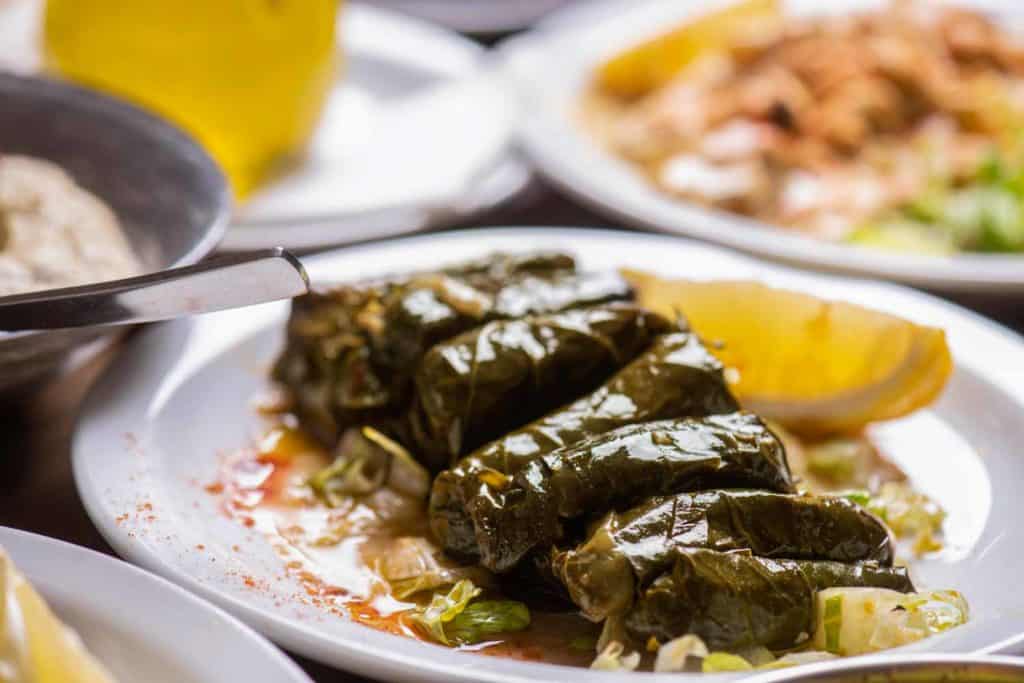
5. Warak Enab
Warak Enab is another Middle Eastern recipe that is worth a try, different countries have different approaches on how the dish is prepared.
But in Jordan, the warak enab (stuffed grape leaves) is prepared by combining finely chopped tomatoes, onions, fresh parsley and mint leaves. Olive oil, rice, lemon juice and rice are then added to the mixture.
Other variations include minced beef, herbs and spices. In Jordan and Palestine, the dish is called warak enab or warak dawali, warak al-arish in Lebanon, yabruk or yalanji in Syria, dolma in Iraq where it is a popular Nowruz food and North Africa. It’s also a popular Sarajevo food called sarma.
Eaten alone or served with plain yogurt, warak enab is delicious and hearty.
6. Fattet Hummus
Fattet hummus is the upgraded version of regular hummus. If you love the creamy texture and nutty flavour or hummus, then you will love fattet hummus even more.
This Middle Eastern chickpea bread pudding is very easy to make which is a combination of pita bread soaked in chicken broth (to make it really soft and dissolvable), mixed with hummus, lemon juice and tahini.
The texture and sourness of fattet hummus vary depending on how you like it. You can adjust the level of acidity by adding more lemon juice, garlic, or tahini to suit your palate.
While most hummus looks thick and dense, Fattet hummus’ texture is different. It looks like whipped cream. It is creamy, tangy and nutty.
This Jordanian variety is packed with nutrients and a great choice for vegetarians.
It is also a common breakfast dish in Syria, Lebanon and Palestine.
Fattet hummus is best served with fresh onions, chilled radish and white cheese.

7. Lamb
I have tried lamb before. I tried lamb in New Zealand where it’s supposedly the best. In general I am not crazy about it.
The national dish of Jordan is mansaf and it changed my mind about lamb.
A large flatbread is topped with rice, almonds, pine nuts and lamb. It has been simmered in dried yogurt and then mixed with water to create a creamy sauce.
My driver Rami explained that many people need to take naps afterward and I can attest that it true.
8. Khubz
While some dishes may claim to have a long history, there is evidence that khubz bread was being eaten in Northern Jordan over 14,000 years ago.
There are also claims that there were six different recipes for khubz included in a cookbook dating from the tenth century.
Today, it is a round flatbread that is traditionally cooked in a clay oven. Because it doesn’t include any fat added to the dough, it can dry quite quickly.
Because of this it is commonly eaten warm from the oven.
The bread can be used to hold foods such as falafel or kebab meat, along with a range of other mezze used as fillings.
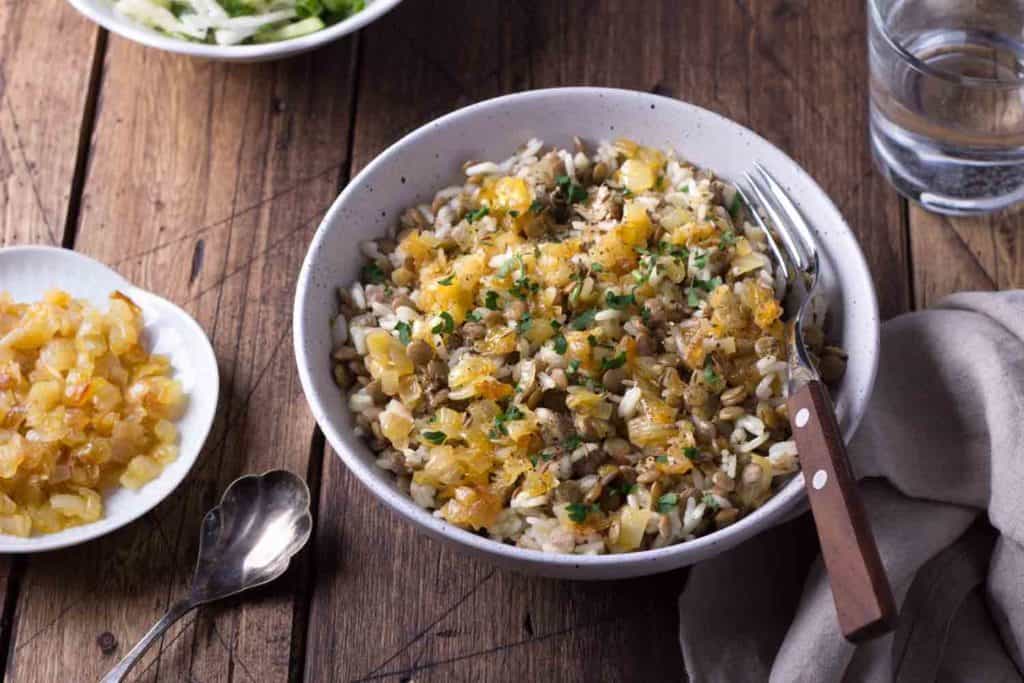
9. Mujadara
Mujadara is another classic Middle Eastern dish made only with three ingredients: rice, lentils and crispy caramelized onions.
Mujadara is nutritious, delicious and economical. This combination of rice and lentils can be found throughout the world and is a popular Ecuadorian food in Guayas and Manta provinces called moro.
Mujadara, mujadarra, moujadara, megadarra, mudardara, mejadra and majadra are a few of the names and spelling variations of this simple dish which is also available in various forms.
In Jordan, rice Mujadara the core ingredients are mixed with vermicelli noodles.
You can eat Mujadara hot or cold without or with sauce that you can make on your own made of fresh herbs and peppers, store-bought chili garlic, or sliced tomatoes.
10. Galayet Bandora
Galayet bandora is another familiar dish in Jordan and Palestine. It’s also known as qalayet bandora.
This may be the simplest Eastern food but is also said to be the tastiest.
Galayet means sautéed or cooked in a frying pan in Arabic while Bandora is for tomatoes. The name of the dish refers to the cooking method and the main ingredient.
From a simple vegetarian recipe to help the farmers on the field get through this traditional food has been added with an interesting twist.
Modern varieties have meat and other spices to enhance the flavor.
When tomatoes are sautéed in olive oil, added with salt and pepper to taste, the plain dish is called galayet bandora.
But if it is added with meat (beef, lamb, goat, or mutton) the menu becomes galayet banddura bi lahmeh and shakshuka if eggs are added to the basic recipe.
Garnished with fresh finely chopped parsley or fresh chili peppers, galayet bandora is best paired with warm bread and tea, plus and pickles on the side.
Restaurants in Amman serve galayet bandora all year round which is often topped with pine nuts to upgrade its simple look.
11. Maqluba
A layered dish that has a very distinct appearance when it is on the plate, maqluba has been a part of Middle Eastern cuisine for centuries.
Indeed, it actually appears in one of the region’s first food books that was published in the thirteenth century.
This Jordanian food is made by layering fried vegetables, rice and meat into a dish. This is then cooked in the metal dish, which is turned upside down on to a plate for presentation.
The most common ingredients are cauliflower and eggplant, while chicken and lamb are often used as the meat for the dish.
Maqluba is usually served with salad and yogurt.
12. Sayadieh
At its heart, sayadieh is a simple dish of fish and rice. Yet it is a delicious way to enjoy fish while visiting Jordan.
The fish itself is either cod or haddock. And the fillet of this white fish is then cooked with turmeric, black pepper, red chili peppers and nuts in the sauce.
The rice is also cooked separately with spices to give it a red hue. The fish is then placed on top of the rice with a few chopped nuts to garnish and it is usually served with a tahini sauce.
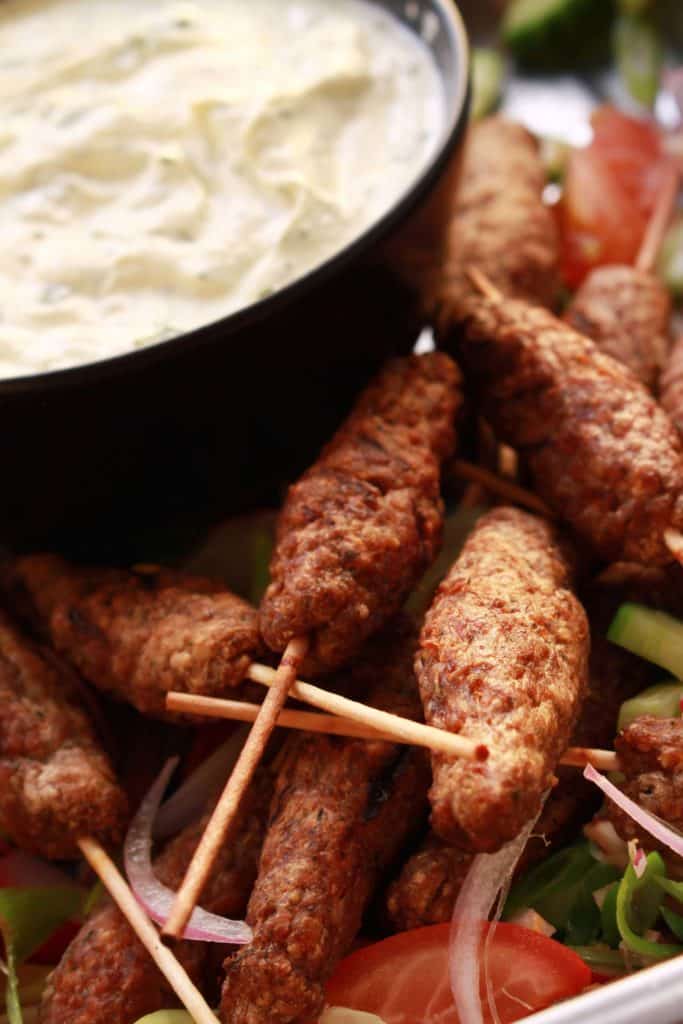
13. Kofta Kebabs
Kofta is made of ground beef or lamb mixed with onions, garlic, cardamom, parsley, allspice, cumin, paprika, cinnamon, salt, nutmeg and pepper.
Kofta originated in Persia – the term has been used for hundreds of years referring to the southern region of Iran.
But Kofta, kafta, kefta, kifta, or koobideh is available throughout the Middle East and every country has different versions with varying ingredients based on the availability.
The usual variety includes vegetarian and seafood kofta. Kebabs are tasty, a little greasy and spicy.
Most people who have tried kebabs rate the dish as excellent making it a popular Middle Eastern dish.
While Kofta kebab is traditionally made into meat balls, the Kofta kebabs mixture is molded and spread onto a wooden or metal skewer for about an inch thickness, then grilled.
Enjoy Kofta Kebabs with flatbread, onion slices, sliced tomato and shredded lettuce or your preferred fixings. Then add yogurt, tahini-based sauce, pepper sauce, peanut sauce, or chutney (depending on the regional tastes).
Kebabs can be eaten as street food or you may also pair this with basmati rice or rice pilaf.
14. Zarb
Zarb showcases ancient and traditional Bedouin cooking. It is also referred to as Bedouin barbeque.
Zarb is usually prepared with chicken, goat, beef, or sheep meat along with carrots, tomatoes, potatoes and onions.
The cooking method has been practiced for over centuries and is still used up to these days.
However, from underground pits, some have adapted to modern methods like the use of an oven and wrapping the meat in aluminum foil instead of palm leaves.
When in Jordan, enjoy the succulent and tender meat with a lingering smoky flavor.
The vegetables are so mouthwatering that you can eat them alone or with rice, various dips and sauces, hummus and salads.
15. Sabanekh
Also often known as fatayer in some areas of the country, these pastries are ideal for a lunch on the go, or can be purchased as a snack from bakeries.
The pastry is baked while preparing these dishes. So it should be crispy on the outside but quite light and fluffy inside.
The filling for sabanekh can include a cheese filling, while the most common filling is a spinach blend where the spinach is mixed with onions, olive oil and seasoned before being folded into the pastry pocket which is then baked.
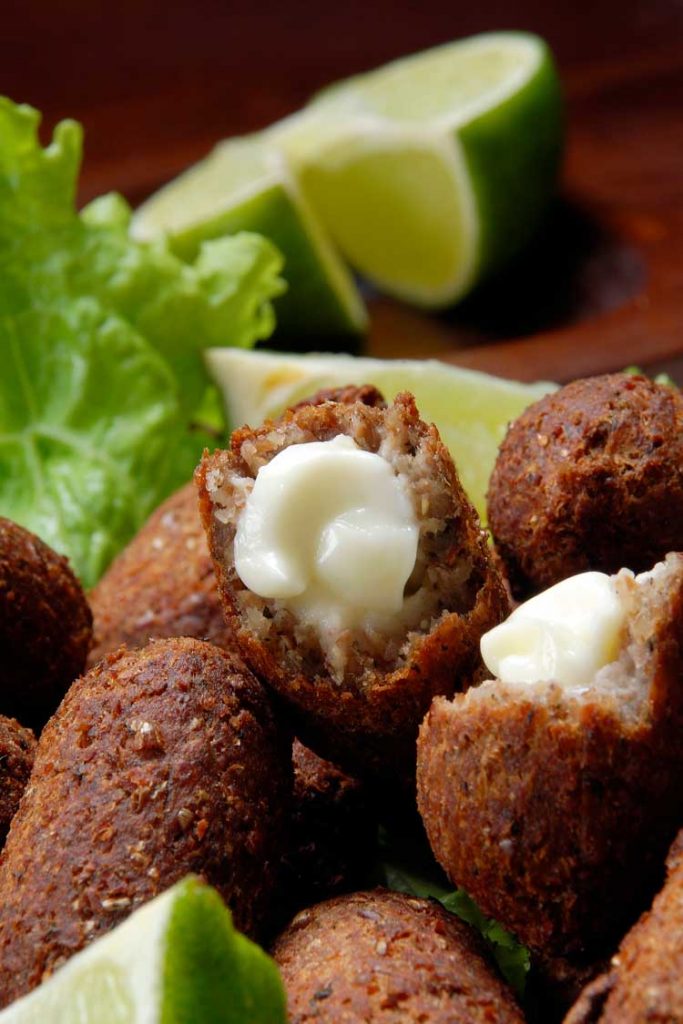
16. Kibbeh
These dumplings are an important part of Jordanian food. They make good use of the bulgur wheat that is grown in the region.
The cracked bulgur wheat is combined with fried onions and ground meat in order to make the dumplings.
The kibbeh can be made with almost any meat that is available. This can include lamb, beef and even camel or goat where available.
The ingredients are seasoned and then worked together before being baked, although some variations may also be cooked in a broth to give the dumpling a softer texture.
Fun Fact: You can also find these treats in Mexico. Traditional food in Mexico is influenced by Lebanese immigrants.
It has evolved to become a popular Mexican antojito, or snack, called kibis.
17. Mo’ajanat/ Moajanat
Pastries are a key part of Jordanian cuisine and mo’ajanat are another type of pastry that can be eaten either as a snack or as part of a larger meal.
The pastries are made by cutting triangles of pastry that are then used to create a pocket. They are usually stuffed with either a cheese, meat or za’atar filling.
In many families, they will usually prepare a batch of these pastries using different fillings.
This means that when you do go in to try and take one of these pastries, you won’t always get to know what the filling will be!
18. Manakish
Manakish is a type of topped bread that would often be compared with pizza by those explaining the dish to people trying it for the first time.
Here, the bread is usually cooked in the morning, with smaller batches being prepared with different toppings.
These can include za’atar spread on the bread, with other topping options including spinach, minced lamb or cheese.
The bread can then be cut into slices to be eaten, or it can also be folded over. Manakish are generally considered to be a breakfast or lunchtime dish in Jordan.
19. Za’atar
Although it is not a dish as such, za’atar is an important part of Jordanian food. It is both a type of herb and a blend of dried spices that includes the herb..
While there are different recipes that can be used in preparing za’atar, the majority of these spice blends will include dried sumac, toasted sesame seeds and salt.
The seasoning can be used to make breads or spread with olive oil on a flatbread. It is also regularly used for seasoning meat dishes.
20. Malfuf
Malfuf, cabbage salad, cabbage roll, or Lebanese salad is another dish commonly prepared in the Levant and Middle Eastern regions and the Mediterranean.
It is mainly made of blanched cabbage stuffed with minced meat; beef, lamb, or chicken and rice.
Other ingredients include finely chopped onion, baharat spice blend, ground cinnamon, allspice, dried mint, black pepper, garlic, fresh lemon juice and garlic.
Other Middle Eastern countries prepare numerous versions of malfuf.
Malfuf is a well-liked Christmas treat in the Balkans, Romania and Moldova. Steamed malfuf is best served when hot or warm, with plain yogurt sauce, or simmered with lemon-garlic sauce.
21. Musakhan
Chicken is one of the staple meats found in Jordanian cuisine as well as Palestinian.
For this Jordanian food the meat is simply prepared so that it shines. The chicken is roasted with pine nuts and onions and is seasoned with a blend including sumac and allspice.
This is served on a taboon flatbread, which gives it a similarity to some chicken kebab dishes. Although here the meat isn’t generally chopped before serving, rather it is served whole.
Musakhan is often prepared to celebrate the olive harvest and the fresh oil. Yet in reality is available throughout the year.
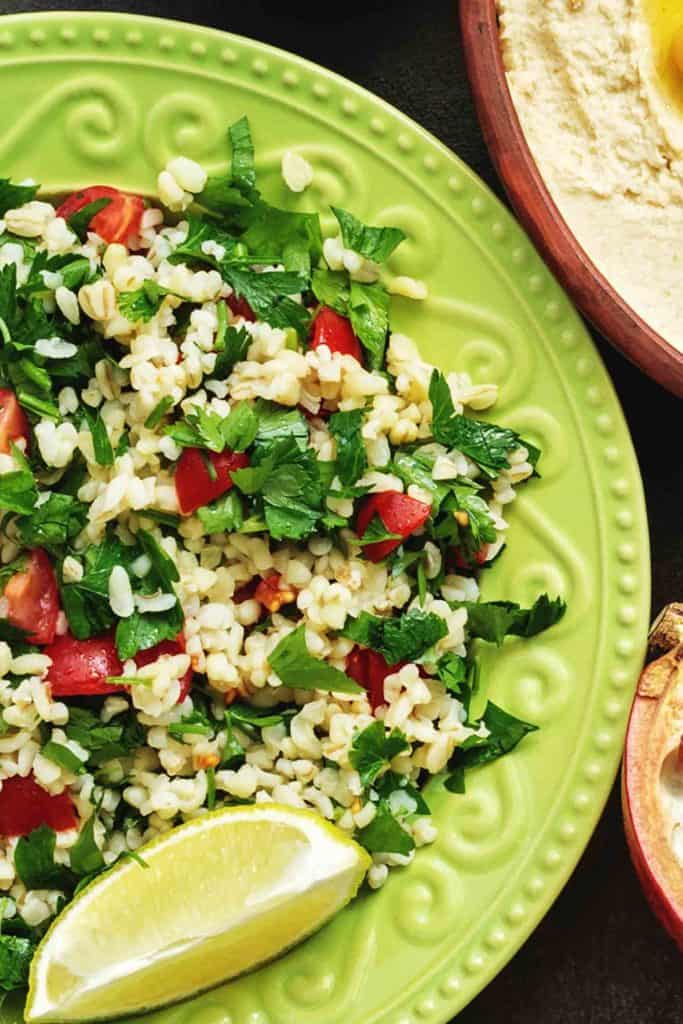
22. Tabbouleh
Salad is something that is not always associated with Middle Eastern cuisine. But here tabbouleh is common and is often part of a mezze spread.
For this Jordanian food the base leaf for the salad is actually parsley, which is chopped and combined with bulgur wheat, mint, tomato and onion. This is drizzled with a zesty dressing that is made with olive oil, lemon juice and salt.
Some variations may also add garlic into the mix as well, although this is not necessary in every recipe.
There are also variations of the dish to be found in many other countries as well, as it has been exported successfully across the world.
23. Freekeh
One of the components of many Jordanian food, freekeh is made by toasting green durum wheat.
The toasting gives the grain a smoky flavour. It is gaining popularity around the world as it is high in protein and fibre.
Cracked freekeh can have a softer texture such as oatmeal, while uncracked is firmer and more often used as a base for other savoury dishes.
Freekeh is washed before it is cooked in a broth and it can then be seasoned before being served.
It is often served with roast meat or vegetables, or it can also be cooked with more broth and prepared as a soup.
24. Adas Soup
Lentil soups are found in many different cuisines. Here in Jordan the Adas is just such a soup that is so filling it is usually served as a main meal rather than an appetizer.
The preparation of the soup is actually very simple, as the two main ingredients are the lentils and a diced onion.
These are then cooked together in a chicken broth, although those catering for vegetarians can easily switch out the chicken stock for a vegetarian one.
The soup is then served with a pita bread and a wedge or two of lemon, for a healthy and hearty soup.
25. Fasoulya
A popular soup in Jordan, fasoulya is a dish that is made with beans as the main staple ingredient.
There can be varieties that are made with either green beans or white beans. However, the versions made with white beans are the most common.
These beans are cooked in a broth with tomatoes and other vegetables that will often include carrots, celery and onions.
As always, the exact recipe varies in line with the chef’s preferences.
Fasoulya is another dish that is found in many parts of the Middle East.
26. Ful Medames
This is a Jordanian stew that is both very simple but can also become elaborate when a range of different ingredients are added to the blend.
The simple recipe for ful medames is fava beans that have been cooked in a broth with vegetable oil and cumin.
However, this simple stew can be enriched with a range of different ingredients, including garlic, onions, parsley and chili peppers.
It is also commonly prepared in a similar way to hummus where the beans are cooked until they are soft and also often cooked with tahini.
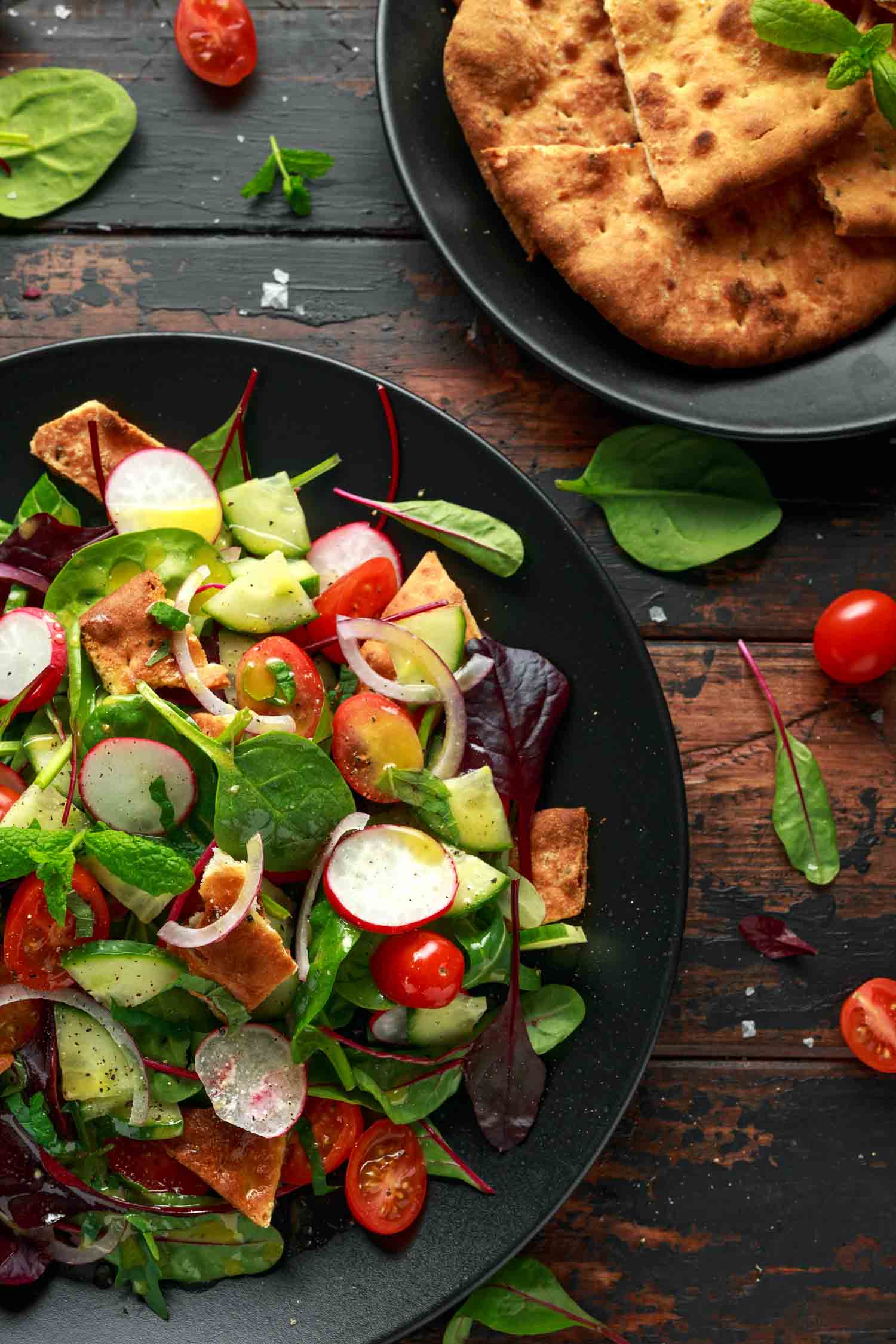
27. Fattoush
This isn’t just a regular salad. The ingredients in the salad usually include lettuce, tomato, mint leaves, red onion and cucumber, which are then drizzled with the dressing.
One of the ways to make a salad more exciting is to use a lively dressing that will really help to emphasize the ingredients in the salad.
The dressing here is a combination of lemon juice, olive oil and red wine vinegar. These sharp ingredients help to give fattoush a zesty citrus flavour.
This dish is particularly popular during Ramadan celebrations.
28. Ara’yes
These sandwiches are often found in street food stalls or kebab shops in Jordan. They look a little similar to quesadillas.
Naturally, the bread used here is a pita bread. Although it is generally not the whole bread but rather two slices of the pitta cut into a quarter circle shape.
These are filled with a mixture of minced lamb, parsley and onions, which are usually seasoned with allspice. Once prepared, they are brushed with olive oil before being grilled on both sides.
This gives the sandwich a crispy texture and the juicy lamb helps to make this an irresistible snack.
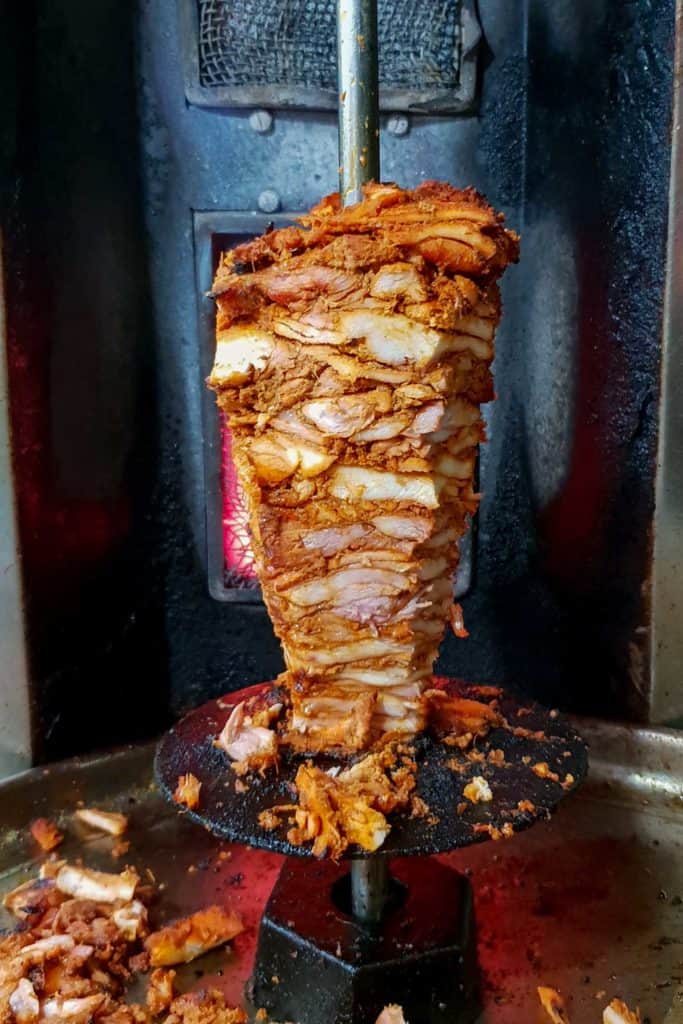
29. Shawarma
Shawarma is believed to be the Arab version of the Turkish doner when the Ottoman Empire controlled the Islamic world centuries ago.
In fact, the word “Shawarma” çevirme in Turkish means “turning” in English.
Shawarma is made of marinated meat: beef, turkey, mutton, or chicken. But the common main ingredients are chicken and beef.
The spices added to the marinade depend on the meat. Beef shawarma marinade consists of nutmeg, cinnamon, cardamom and thyme.
Chicken shawarma typically consists of white vinegar, chili paste and oregano. But other spices like turmeric and baharat can also be added depending on one’s preference.
Shawarma is tasty, bursting with flavors and textures, with well-cooked and tender meat rolled in laffa or pita bread.
The same with other food recipes in Jordan, Shawarma can be enjoyed with pickles, sliced vegetables, tahini-based or spicy sauce.

Jordanian Drinks
30. Limonana
I usually only drink water or alcohol. I’m not big on juice or pop, but here in Jordan lemonade is mixed with so much mint it is green and absolutely delicious.
And the mint doesn’t stop there. I resisted drinking any tea here but then Mahmoud told me to try to sage tea with mint, I’m a complete convert and love it.
Maybe I should have a site called Mint is Magic?
31. Shaneeneh
A traditional yogurt drink that is particularly popular during the summer months. It is often drank to help people to cool down during the heat.
The preparation of shaneeneh is actually remarkably simple, as it is effectively a blend of natural yogurt that is combined with iced water and a measure of salt.
There are some variations that will also use carbonated water, with a little mint included to add to the flavour as well.
This has been drunk in Jordan and the region for centuries and is often an accompaniment to meat and rice dishes.
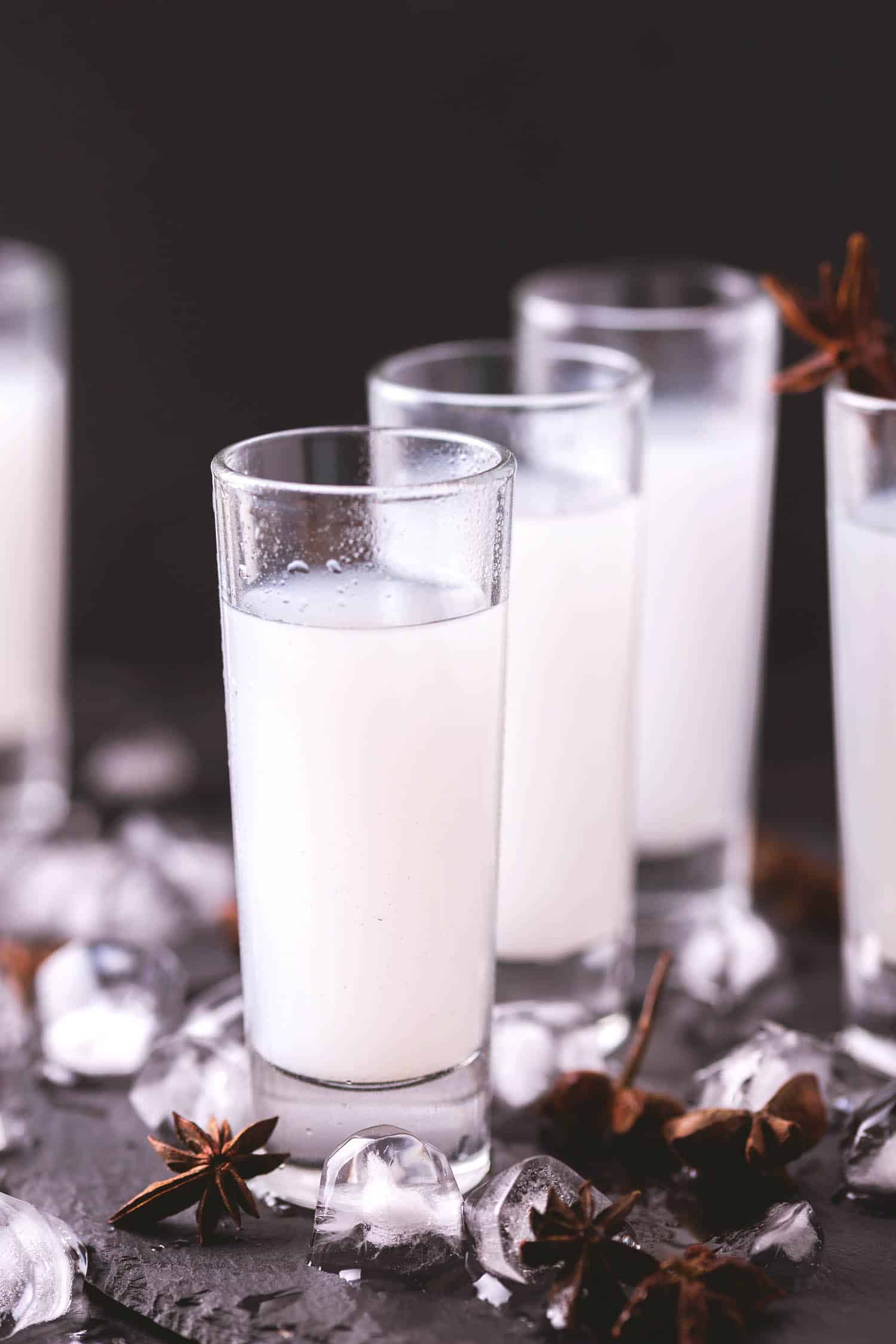
32. Arak
A spirit that is made with anise and grapes, arak is one of the common drinks that is used to accompany mezze dishes in Jordan.
In fact, it is known as the milk of lions and popular throughout the Middle East. However, sometimes it is better known as arack or arraki.
The spirit is simple to produce. It is made with grapes and the oil squeezed from aniseeds, which give this spirit a liquorice flavour.
When it is drunk, the arak is generally diluted with water in around two parts water to one part arak. When it is served, the mixture of arak and water is usually poured over ice. Ice is never added last.
If you pour incorrectly it can cause part of the spirit to separate. It will leave an oily layer on the top of the drink.
Also, for the same reason, it is customary to use a clean glass for each drink, rather than topping up a glass with more arak.
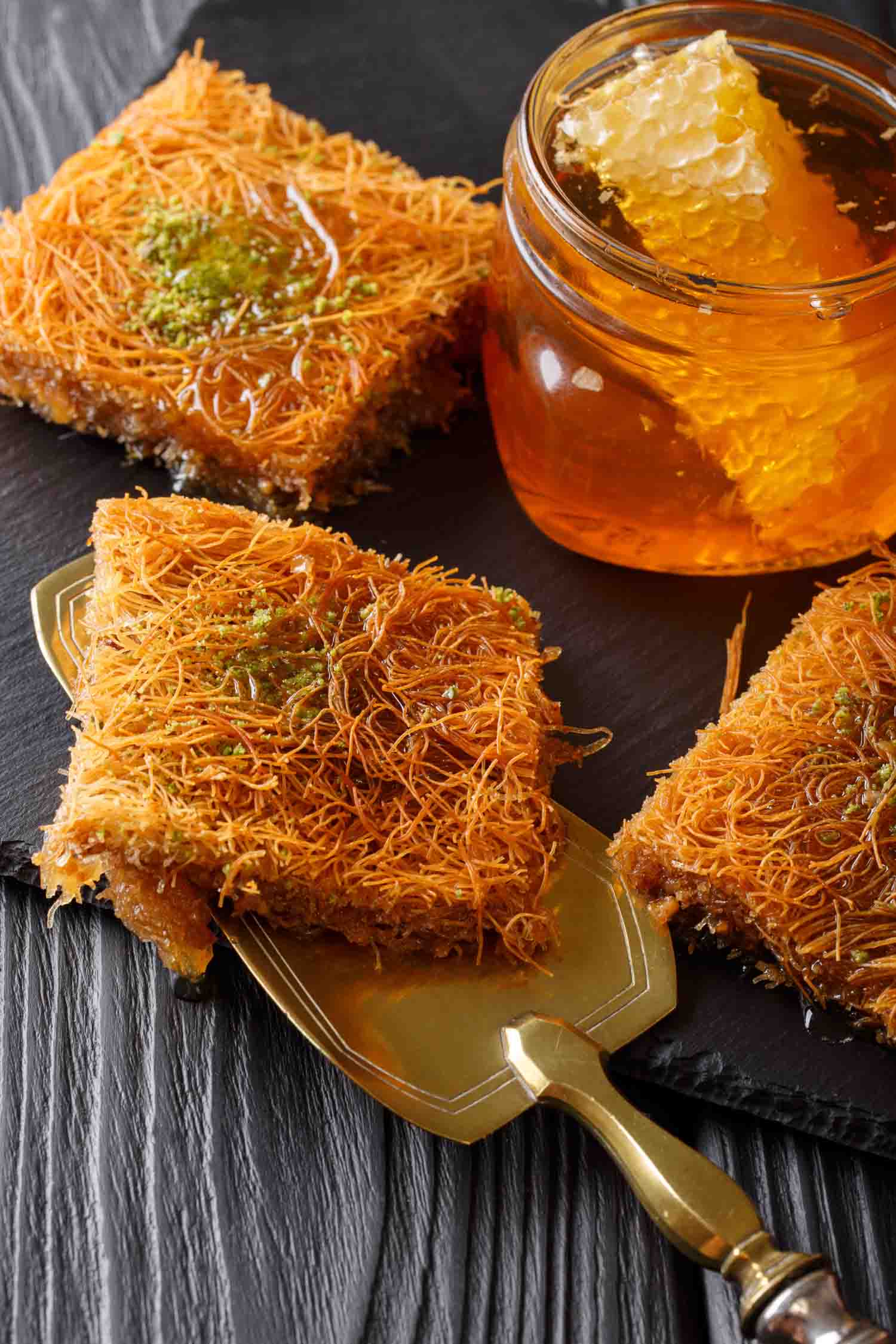
Desserts in Jordan
33. Knafeh
Another dessert in Jordan that is common in many countries in the region., Knafeh is made with a type of pastry that is very thin, often made with semolina.
This dough is layered with generous servings of a sweet syrup, with some layers of clotted cream in between the layers of dough.
The pastry is often covered with either red or orange food colouring to make the mix even more appetizing.
Once cooked, it is often drizzled with more syrup then topped with chopped pistachios to serve.
34. Warbat
A Jordanian dessert that originated in Jordan, but is now popular throughout the region.
Warbat does have some similarities with baklava. Here the thin layers of phyllo pastry are interspersed with layers of custard.
It can be flavoured with a range of different sweet flavours such as orange blossom or lemon.
It is topped with a drizzle of sweet syrup and often chopped pistachios or other nuts as well. Warbat can actually look quite different.
It depends whether it is produced in larger batches and presented in a large pan, or individually presented treats.
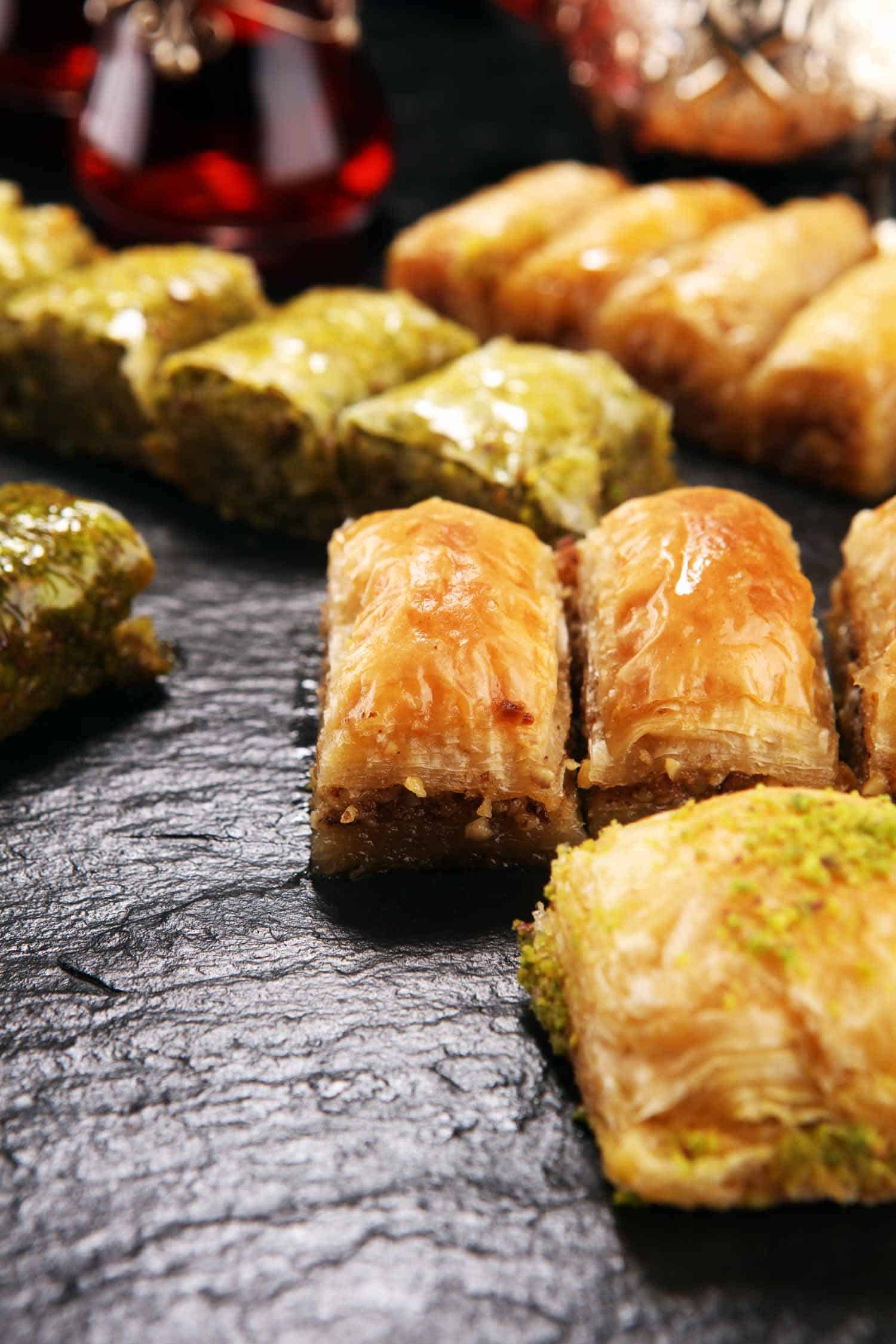
35. Baklava
This dessert has been made in the Middle East for over two thousand years. In fact there is a with a reference to the sweet treat in the writings of Cluny the Elder, over a century BC.
Its success depends on the combination of pastry, nuts and honey that has proven to appeal to taste buds over the millennia.
The layers of phyllo pastry are combined with layers of pistachios, walnuts or hazelnuts. The glue that holds it all together is honey.
For serving, the baklava may also be drizzled with a rose water or orange flower water syrup.
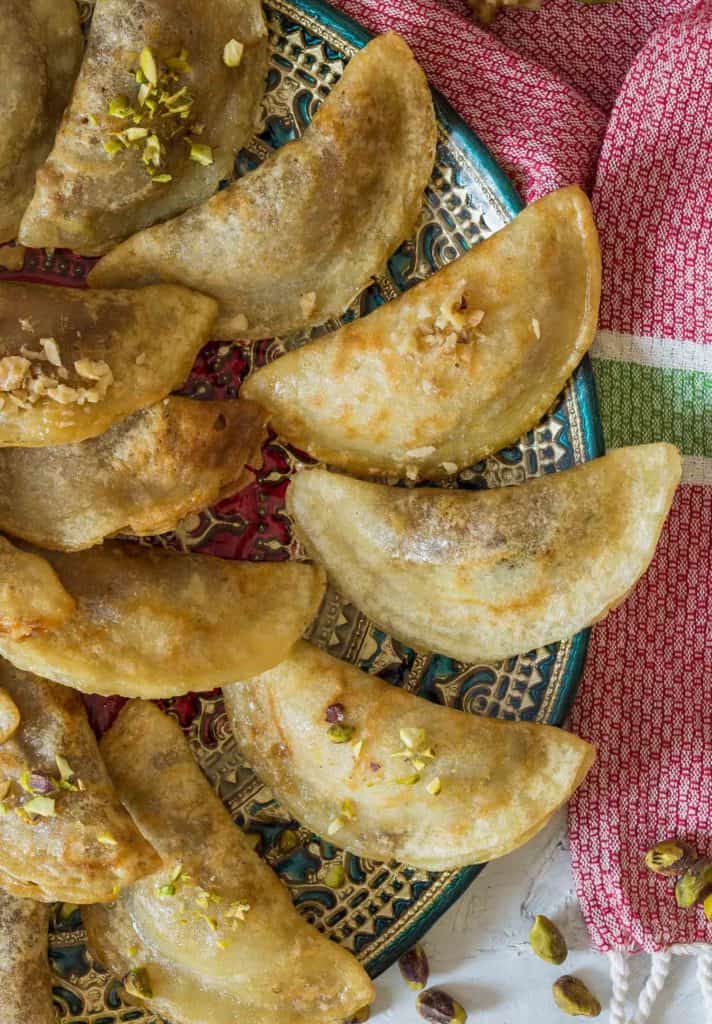
36. Qatayef
Qatayef, katayef, atayef, qata’if is an Arab dessert that is commonly prepared during the holy month of Ramadan.
There may be numerous Middle Eastern or Mediterranean desserts but the real star of Ramadan is this stuffed pancake.
Considering that this dish looks like a crescent moon, there is no wonder why qatayef is glorified.
The variety varies from sweet to savory, depending on the region. But in Jordan, qatayef is filled with pistachios, walnuts, peanuts, hazelnuts, raisins, unsalted cheese and almonds.
Qatayef is flavored with vanilla, sugar and cinnamon then glazed with honey as toppings. qatayef is packed with flavors with a creamy yet crunchy texture because of the mixed nuts.
With so much going on in your mouth, you will never get bored with qatayef.
37. Umm’Ali
This is one of the desserts in Jordan that is often found in family meals.
This is a dish similar to a bread and butter pudding. However, instead of bread the chef will use pastry as the bread element of the dish.
This is combined with pistachios, raisins and coconut flakes, before receiving a generous measure of sugar.
The umm’ali is then baked until the dish has a golden crust. Finally it is sprinkled with cinnamon to serve.

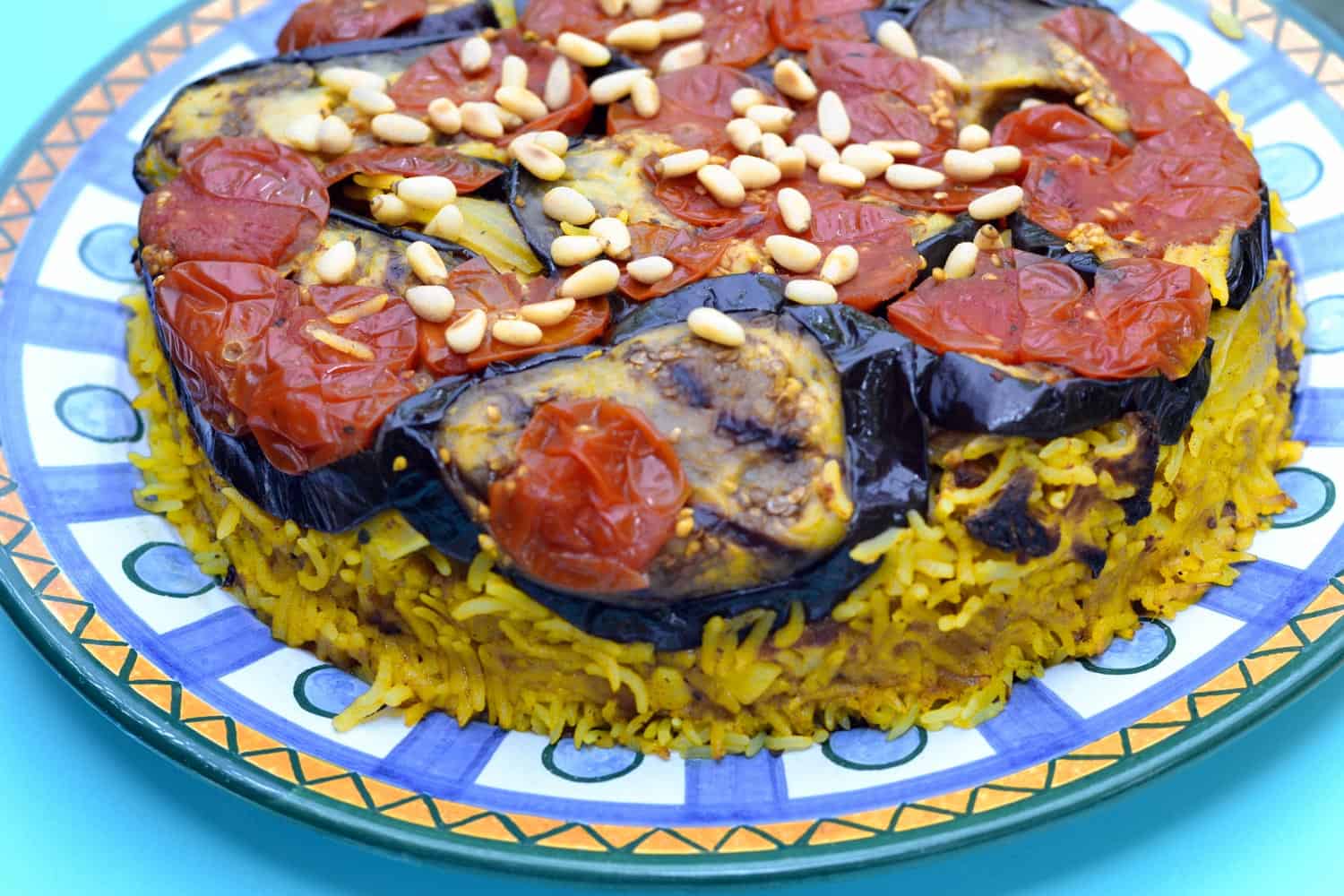
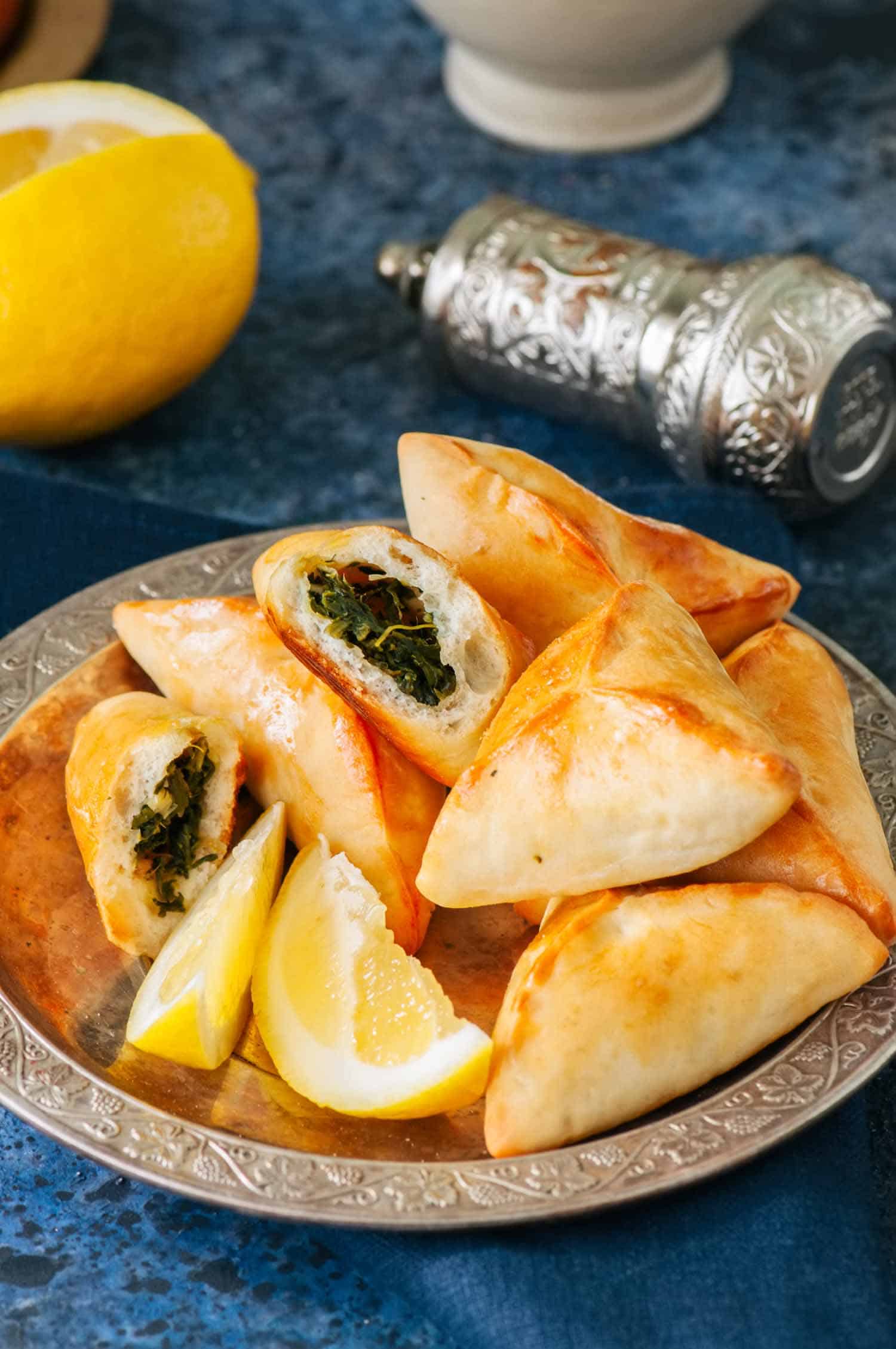
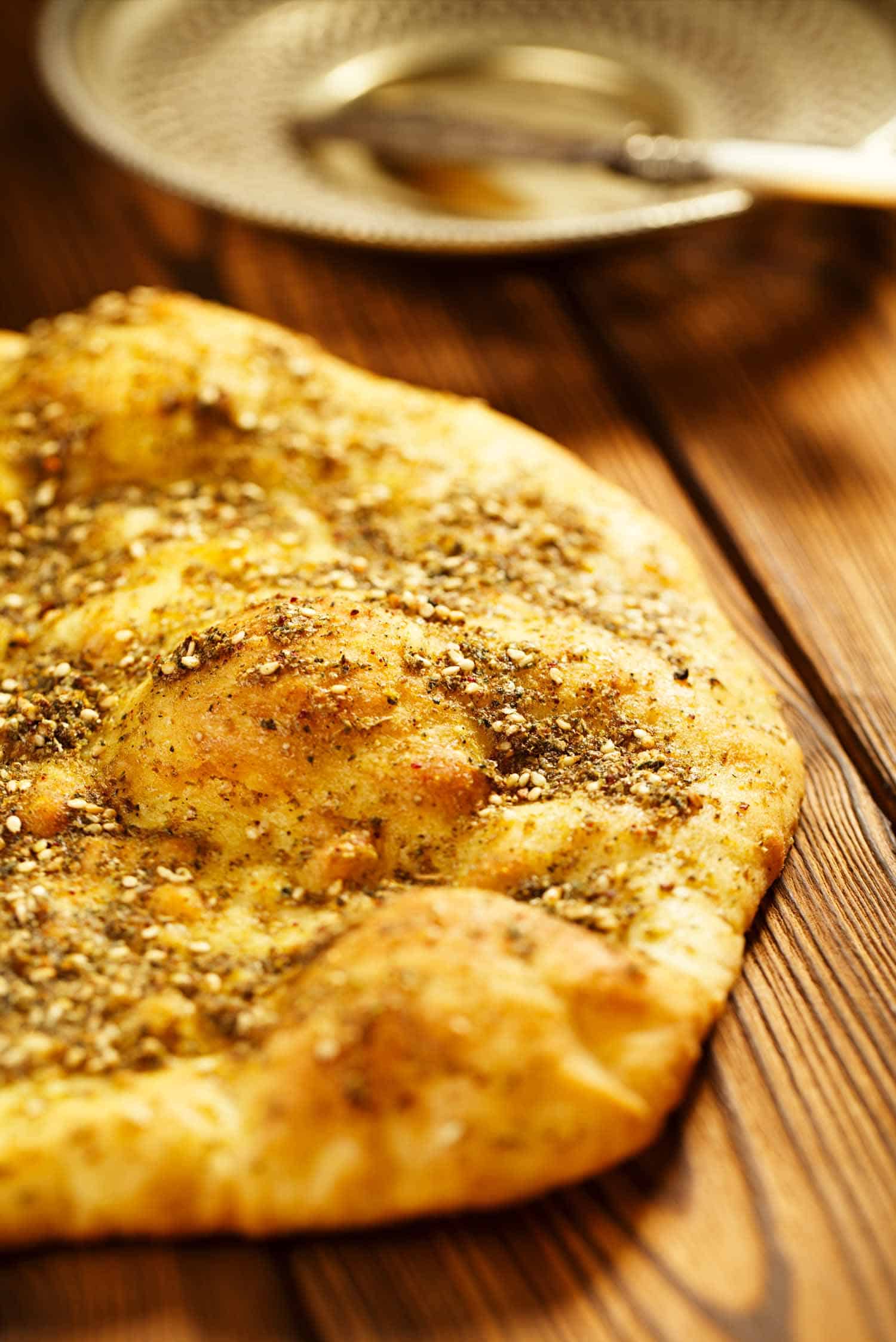
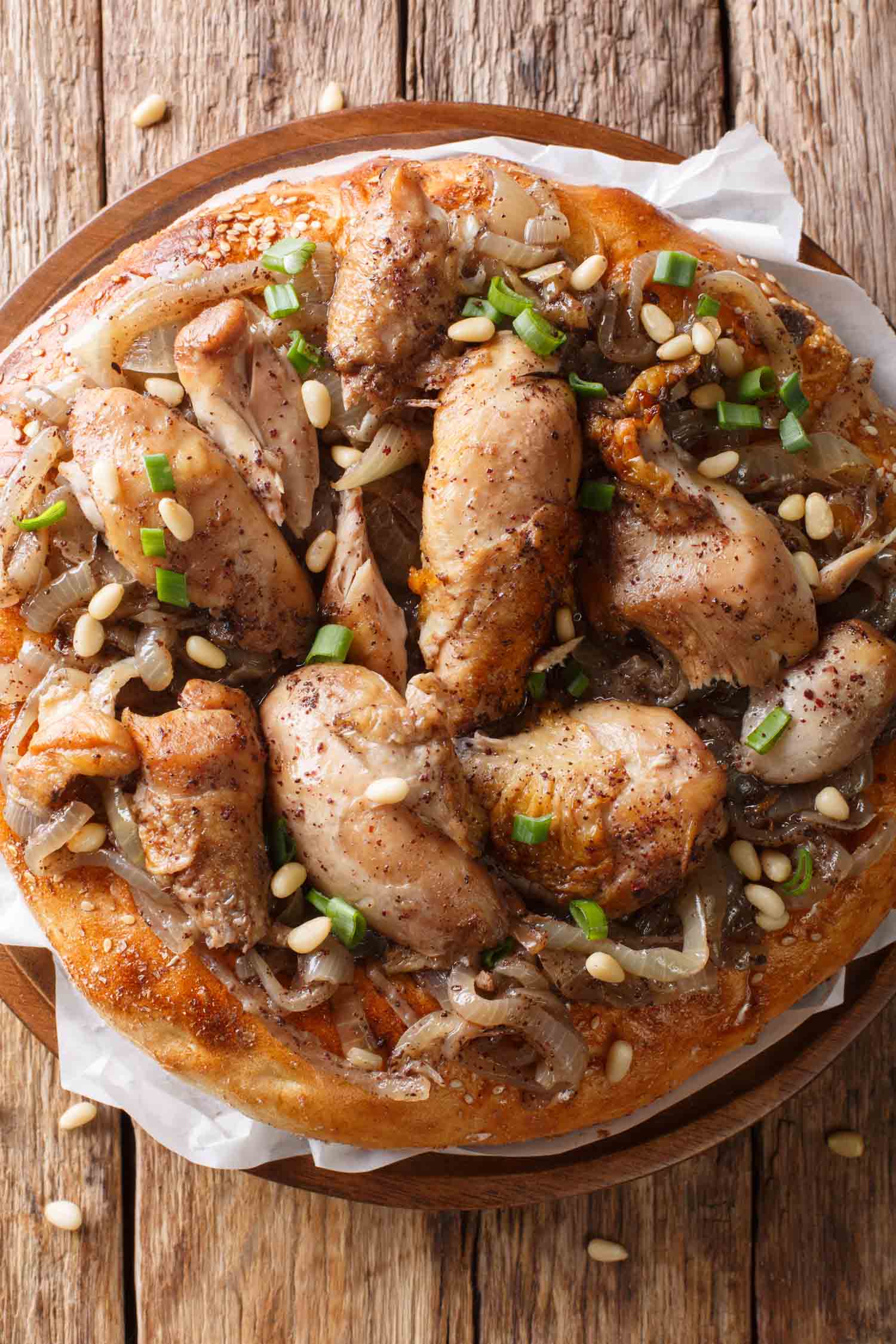
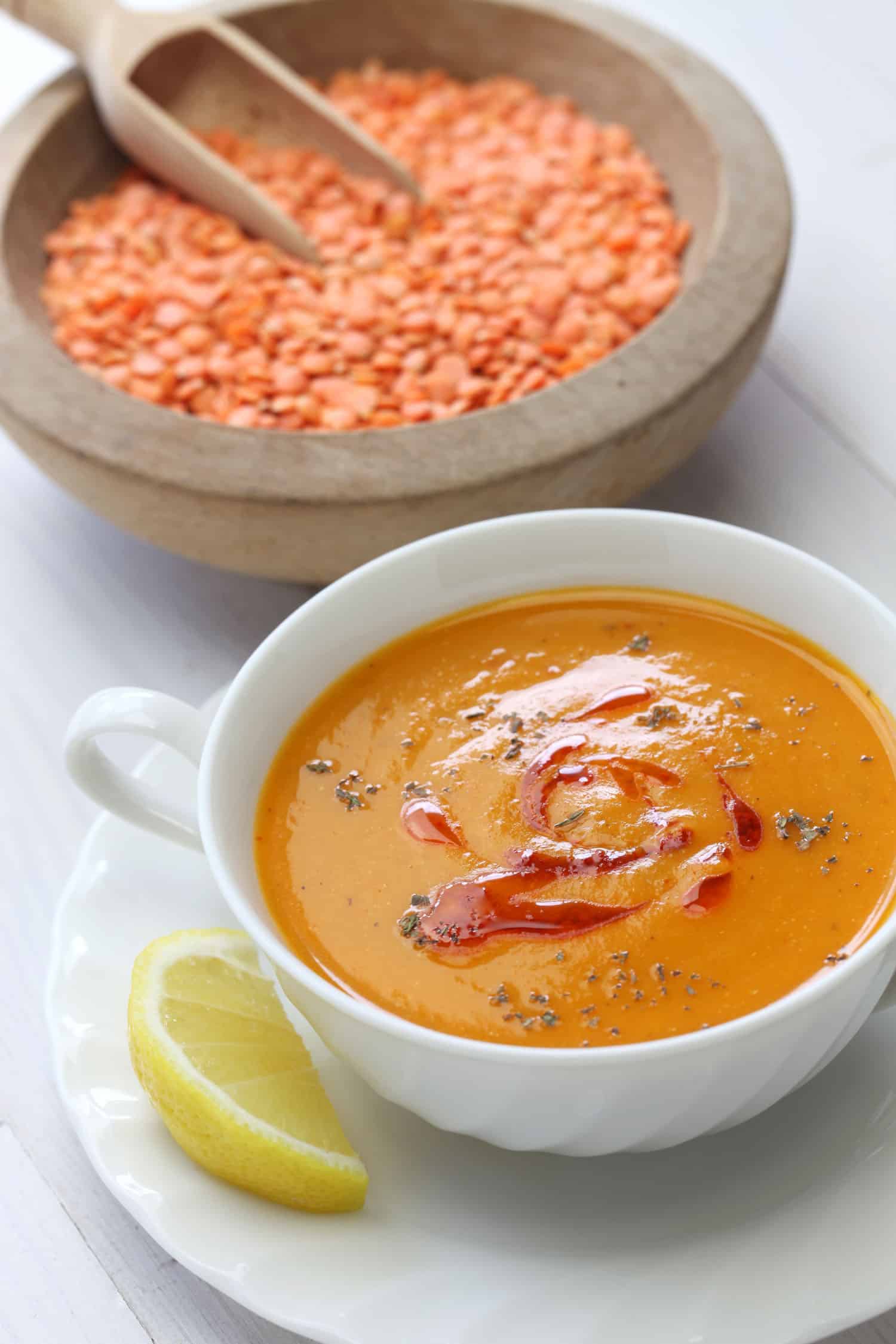
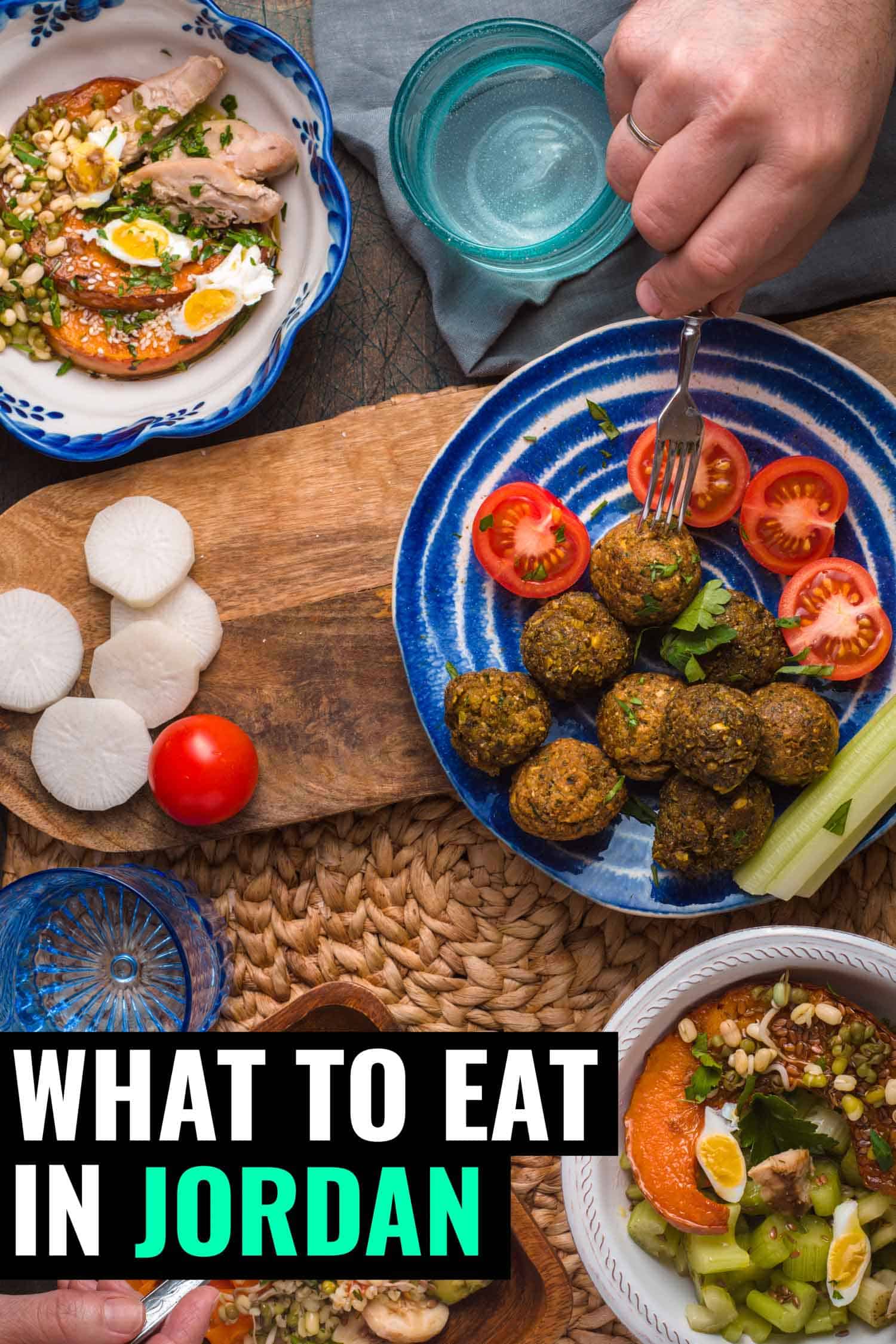
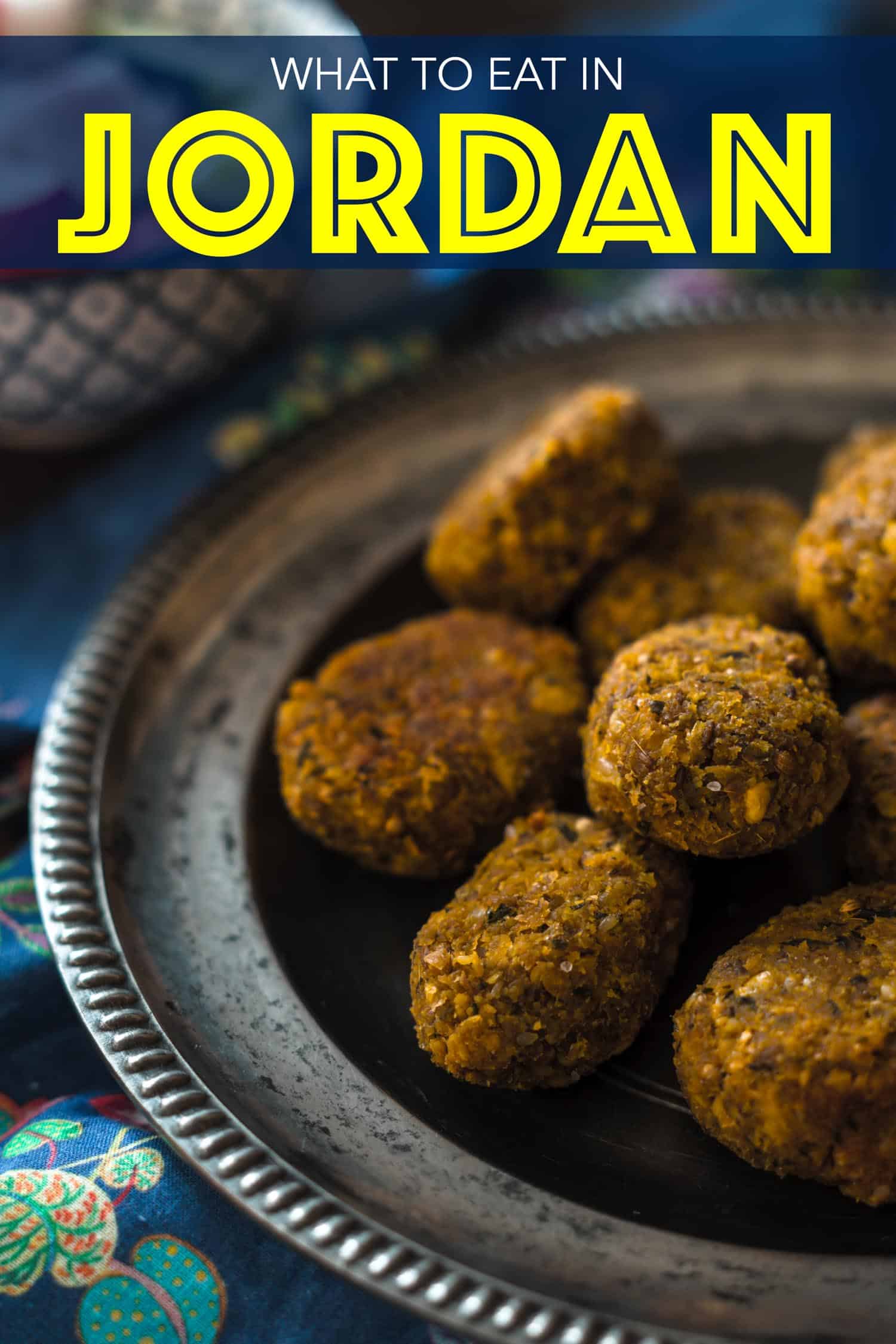
I’m about to go to bed…and now I want a midnight snack. Yum!
Signed,
Jealous in Chicago 🙂
All of it sounds absolutely delicious, but I’m really intrigued by the minty lemonade.
i think most ladies would be lukewarm about rockhard flavourless balls.
hahahahaaha!!!!
Ok Ok.. i don’t like onions. there i said it! many ppl would throw a blub at me:*(
Love your food photos. The first time I tried falafel was actually on this trip to Jordan, even though I’ve also passed by countless falafel shops in Toronto.
At first I thought it was strange that it’s greenish-yellow inside the falafel, but after having it as part of my breakfast for a few days they became an acquired taste.
Food is such an important part of a good travel experience, so really happy to hear you enjoyed the deliciousness!
– Lily
Hi Ayngelina, I have similar feelings about falafel (or shwarma for that matter) in Toronto. Maybe because the first time I tried it, it was in Israel. PS: I also don’t like eating Indian food in Toronto for the same reasons, don’t know why, too sanitary? lol.
Middle Eastern food is my absolute fave… obviously to me it’s pure comfort food, as it’s the stuff I grew up on, but seriously: just looking at the photos in the post makes my mouth water. YUM!
Hope you are bringing some of that tea home! Look forward to all the variety of foods that you will be making when you get home for Christmas! We will be starting new traditions this year – at least in the kitchen!
The lamb sounds delicious. And I would love to try the sage tea. That sounds very interesting.
I would totally read Mint is Magic 😉
Too many things I don’t like to list them all (they include lamb, though). However, Arab food is my favourite, so I do very well in Jordan 🙂
Mmmm I freaking love falafel but you are right, if it isnt done well it is dry balls of garbage. Jordan looks delicious.
balls of garbage – love it!
It is interesting to see a plate of french fries in the middle of the platter of Jordanian food. There is a Middle Eastern place just around the corner from me and they have french fries on their menu. I thought this was just because they wanted to appease certain finicky American diners. I guess it must be a staple as shown by this photo.
I think french fries have become a universal staple now. But for the record, I had none in Jordan.
Hello every one??I am also crazy to think that for the mean time i will eat that kind of food where as I can’t found it in Philippines but when I tasted it ;it was amazing and I like it unexpectedly ???
I learned to love onions and yogurt while I was in France 🙂
Onions are amazing, but not raw.
Yum! I really can’t wait to go!
You will love it Angie, it is fantastic.
Ah food… I am a preferred vegetarian but when on the road I can’t be trusted – too many delicious and new things to try, and even though we can have practically everything here too, it just doesn’t taste the same. Gotta add mint to my sage tea…never thought of that!
It is really delicious. I’m not a huge tea fan but I couldn’t turn it down.
In the UAE, they make mint lemonade — mint blended with ice and lemon juice then sweetened. It is fantastic!
All of those food pics look delicious! I feel the same way about falafels. Guess I just haven’t had the good stuff.
I have always wanted to like them but never could, you must go to Jordan. Or maybe first just try a Jordanian restaurant.
Wow. the only green lemonade I’ve ever seen is the lime-ade at Hot Dog on a Stick.
Falafels usually tastes better with tzatziki and chili sauce as well.
Wait is hot dog on a stick a restaurant?
What?! You don’t like green pepper or eggplant?? 🙂 I agree with you that the falafel in Jordan is delicious. My favorite was in a little local eatery in Amman. I loved pretty much all of the food I was served in Jordan, and of course enjoy a shwarma or two along the way 🙂
You actually like green pepper? Cooked or raw? Actually I can’t stand it either way. At least we agree on food in Jordan.
Yum! I’m thinking about a trip to Egypt/Jordan in Feb and your getting me excited to eat there!
My biggest piece of advice is to make sure you allot enough time for Jordan. A lot of people only stay 2-3 days but you definitely need more time.
Ayngelina, I love reading Bacon is Magic, but I’m sorry, I’d stay as far away as possible from a site called Mint is Magic. Yuck! I just about gagged when I saw that lemonade. It’s the same color as green peppers. That should tell you all you need to know right there.
Everything else looks great!
What you hate mint? how? why?
I will not change the blog name, but only for you.
That mint lemonade…yum! At the cooking school I worked at in Nice, we made a version of the eggplant dip with goats cheese…SO good. A variation worth trying 🙂
The lemonade is fantastic. I’ll be making it this summer.
I hate eggplant as well, but I’ll eat it in Indian food only. Maybe I need to give this dish a shot as well.
Also, that lamb dish looks AMAZING!
I just find the texture is usually disgusting and baba ganoush isn’t flavourful enough for me but this dip is really fresh and tasty.
Wow, lamb that’s better than NZ’s huh??
You’re making me hungry just talking about all the foods you thought you didn’t like but ended up loving ;). I think bad first impressions can haunt us for years – when prepared the right way, I think we’d all be surprised at how many more things we’d try.
I just tried to eat that food right through the computer screen. There’s now drool on my laptop. It was worth it, though! 🙂
Ha, well as long as it’s worth it!
Eggplant droooooool!
I knew you would like it.
That lamb looks bommmmmmb
Those dishes looks so yummy. When are you coming to NY? I want to take you to have all sorta of good Chinese food haha Maybe you’ll have a post about asian food here.
I would LOVE to come to NYC. It actually could be in the plans for me this summer….
It’s great you’re actually giving a second chance to all those things you used not to like!
I thought green pepper was a pretty common dislike! This spread looks amazing. I jump down people’s throats about not liking cilantro, since where I from (New Mexico), we put it on everything! PS I also dislike eggplant.
I am so happy that you are backing me up on this – green pepper is disgusting.
Cilantro is delicious!
Talk about mouth watering! Everything looks super delicious, especially the Falafels! My fav!
My new fav too, can you get them in Belice?
Unfortunately no! That sucks.. I can only have them when I visit Guatemala or Mexico.
Well at least you are somewhat close…
It all looks and sounds so good. I am especially intrigued by the mouttabal. Food is such a driver for where we will visit… I guess we’ll have to head over to Jordan for a taste. Fun post.
It is definitely worth it for the mouttabal.
Wow, great photos. I agree about the falafel. Best in the world!
Falafel is AMAZING when done right!
Yes and I hadn’t had it right until Jordan
Falafel and mouttabal are one of my favorite foods! I’ve learned how to make mouttabal at home and have it with some nice pita bread!
But what I was really surprised to see was the lemonade mint drink! It looks really refreshing! I must look into trying it sometime soon! 🙂
Looks delish! The mouttabal in particular sounds amazing, and I wouldn’t say no to some falafel.
From now on I won’t either!
Girrrrl, I am so with you on the eggplant. BLECH. Yet, you’re right, when I was in Israel, I’m pretty sure I liked the eggplant concoctions they whipped up.
I LOVE Middle Eastern food. It is SO good!! That first photo made me super hungry!
I’m with ya on the green peppers. I’ve always loved falafel though.. 🙂
That lamb looks AMAZING. I love almonds in food.
Really? What other almond/food combination do you love?
I agree with you that if falafel isn’t done right there’s not much going on.
Green peppers are yummy! haha
Also I am amused of the first photo all the Jordanian food and then the french fries there in the bottom. Gotta love it.
I am just like you though I often dislike a food and then I have it where it is from which is where people normally make it the best and I fall in love but then I try to make it at home and it is never the same again and instead I just dream about it all the time. haha things like that are what are sparking the ideas for my new site 🙂 (plug) haha
I know french fries aren’t what come to mind when you think of Jordan, I guess they are universal!
Dang, it’s really hard to read your blog… because from the very start all I can think about is bacon. 😉 I too hate lamb, but I guess I mean the gyro/doner sort of stuff that has that funky smell. Nearly makes me wretch. Was plagued once by that smell while traveling in Syria. Couldn’t identify the source until I brought my hand up near my face. The soap I had used at the last restroom was made with lamb fat. The horror! The horror! Love the lemonade/mint and make it at home now. Middle Eastern eggplant undid the disgust I had for it based on the atrocities that are (US) Midwestern recipes.
Jodi from Legal Nomads told me its her favourite meat. I love Jodi but I do not get that at all.
Wow. The food here looks incredible. Especially as I heart falafels big time!
The food in this place looks incredible. Especially as I heart falafels … big time!
I read lemonade then saw the picture and my first thought was, “something is seriously funky with that lemonade.” Although, after reading that it is mint filled I’m intrigued. Is it just crushed/puréed mint, lemons and sugar? I kind of want to try a version at home now.
Finely chopped mint in it, although I’m sure you could just throw lemonade and mint in the blend, that is actually a really good idea…
i just cant eat felafel..i tried it in abu dhabi,but its really tasteless for me..the good thing was their tabbouleh..the salad made of parsely and mint..delicious..and the shawarma..its great.
the reason why most falafel in toronto tastes bad/bland is because they’re fried and left to sit until someone orders them. THen they’re nuked. Falafel is best when fresh out of the fryer. And even then, it’s up to how good the maker was.
The best in Toronto I’ve had so far (if you can call it Toronto) is Rifca’s Kitchen in Richmond Hill. Not Jordanian but Palestinian and it’s AMAZING and fresh every time. Everything is scratch made, including the hot sauce.
Now if you’r ever in Aman, Jordan, check out a small hole in the wall called Hashem. Not the easiest place to find but ask any local and they’ll know it. Falafel is really good but the HUMMUS IS LIKE CRACK.
Craving some mansaf right now ^__^ , a tip from a Jordanian you can add alcohol to your mint lemonade (mind blowing isn’t it?)
Middle eastern food is one of my favorite and Glad i read your post. love those images as well. since I read this, I am off to eat some food.